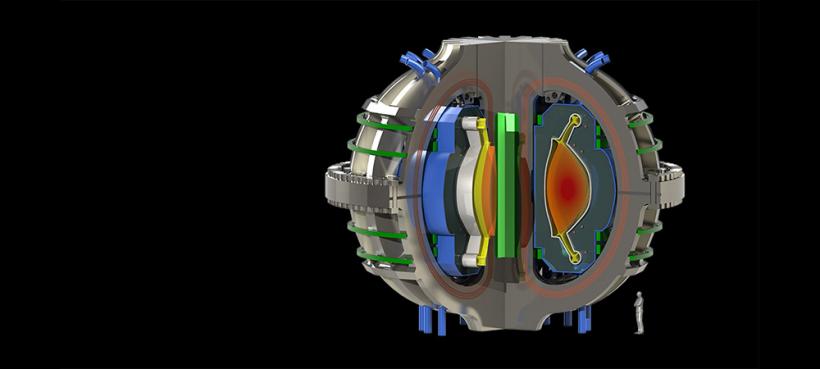
Fusion energy requires confinement of a very hot plasma at a high pressure. The magnetic confinement approach uses strong magnetic fields to confine a very hot—many times hotter than the center of the sun—plasma with pressures up to 10 times the atmospheric pressure at Earth’s surface. The strength of the magnetic field is a critical parameter in achieving these conditions since it provides both the insulation to keep the plasma hot, and the external pressure to stably hold the plasma—all without physical contact between the plasma and a material surface. This is the essence of the “magnetic bottle” used to make a star on Earth. The magnetic field for the bottle is made by powerful electromagnets where large electric currents flow in loops surrounding the plasma. For a fusion reactor, these currents must flow in a “superconductor” that provides zero resistance to the current, enabling the magnetic field to be produced indefinitely without having to supply electrical power to the magnets.
The fusion power produced in a tokamak is proportional to the strength of the magnetic field to the fourth power. Therefore, a factor of two increase in magnetic field leads to sixteen times the amount of fusion power for a given device size. In turn, at fixed fusion power, a smaller device can be built using a higher field. Therefore, the size, timeline and economics of a magnetic-confinement fusion power plant are strongly dependent on the quality of the superconductor electromagnets.
The high-field approach to fusion at PSFC has two facets: explore the confinement and stability of the plasma at high field using short pulse copper electromagnets (Alcator C-Mod, ADX), and advance superconductor magnet technology to obtain the highest possible magnetic field, two areas where the PSFC has world-leading expertise. Recent advances in superconductor technology, so-called high-temperature superconductors (HTS), now put within reach the ability to double the magnetic field compared to ITER. Conceptual designs and research on tabletop HTS coils by PSFC researchers aim to show how higher fields provide an extremely attractive and faster pathway to the development of fusion science and energy.
Dennis Whyte
whyte@psfc.mit.edu